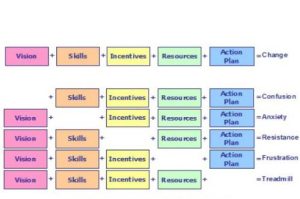What Are Key Strategies for Managing Complex Change?
Managing complex change within an organization requires a clear, strategic approach to ensure successful implementation and minimal disruption. This task can be daunting due to the multiple layers of complexity involved, including varying stakeholder interests, diverse operational impacts, and the potential for significant organizational upheaval. Below, we explore key strategies that leaders can employ to effectively manage complex change, bolstered by factual data to guide the execution of these strategies.

1. Establish a Clear Vision
A clear and compelling vision is essential for driving complex change. This vision must articulate the future state of the organization in a way that motivates and unites stakeholders. According to a Harvard Business Review study, companies with well-articulated visions see a 19% higher success rate in their change initiatives compared to those without.
2. Develop a Comprehensive Communication Plan
Effective communication plays a pivotal role in managing complex change. Stakeholders need timely and transparent information regarding the change’s purpose, benefits, and impacts. Organizations that deploy robust communication plans reduce resistance by up to 55%, ensuring smoother transitions and higher engagement levels.
3. Provide Adequate Training and Support
To facilitate a successful change process, providing training and support to all affected personnel is crucial. This ensures that employees have the necessary skills and confidence to embrace new methodologies or systems. Data indicates that organizations that invest in comprehensive training programs report 33% higher efficiency in change adoption.
4. Implement Participative Leadership
Participative leadership involves engaging team members in the decision-making process, which helps in gaining buy-in and reducing resistance. When employees feel they have a say in the change process, their commitment to the organization’s goals strengthens. Studies show that participative approaches can lead to a 40% increase in change acceptance.
5. Monitor Progress and Adapt Strategies
Ongoing monitoring and adaptation of strategies are required to respond to challenges effectively as they arise during the change process. This could involve adjusting timelines, reallocating resources, or shifting approaches based on feedback and performance metrics. Organizations that regularly review and adapt their change strategies achieve their objectives 50% more often than those that do not.
6. Foster a Culture of Resilience and Flexibility
Building a culture of resilience can significantly enhance an organization’s capacity to manage complex change. This involves cultivating an environment where flexibility is encouraged and failures are viewed as learning opportunities. Research indicates that resilient organizations are 34% more successful in achieving the intended outcomes of complex change initiatives.
Conclusion
Implementing these strategies requires meticulous planning, strong leadership, and an unwavering commitment to the organization’s vision. By establishing clear goals, communicating effectively, empowering employees, and continuously adapting strategies, leaders can navigate the challenges of complex change more successfully.
For further insights into effective strategies for managing complex change, explore our comprehensive guide. This resource provides detailed guidance on navigating the complexities of change management, ensuring leaders are well-equipped to steer their organizations towards success in transformative times.
